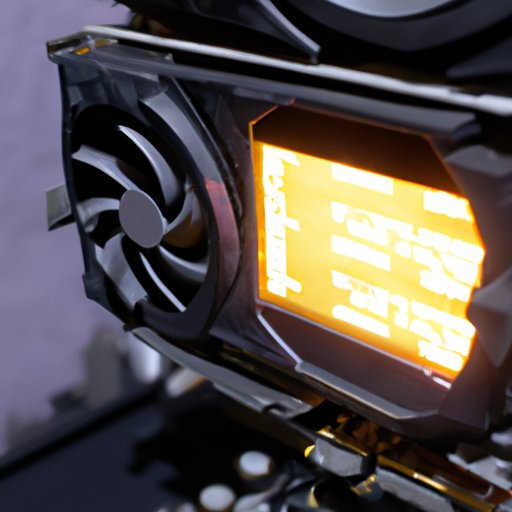
I. Introduction
If you use your computer for gaming or other graphics-intensive tasks, monitoring your GPU temperature is crucial. Overheating can damage your computer’s hardware and negatively impact performance. In this article, we’ll show you how to check GPU temperature step-by-step to keep your computer running safe and cool.
II. A step-by-step guide to checking GPU temperature
The easiest way to check your GPU temperature is by using software such as HWMonitor or MSI Afterburner. Here’s how you can do it:
- Go to the software’s website and download the latest version.
- Once downloaded, install the software on your computer.
- Open the software and locate the GPU temperature monitoring feature.
- Run a task to increase your GPU’s load, such as playing a game or rendering a video.
- Observe the readings on the software and compare them to safe GPU temperature ranges.
- For AMD GPUs, a safe range is typically between 40-75°C.
- For NVIDIA GPUs, a safe range is usually between 30-85°C.
III. Infographic or video tutorial
Visual aids can help you understand and remember the process of checking your GPU temperature. Check out these resources to learn more:
- Infographic: How to Monitor GPU Temperature on Windows 10
- Video tutorial: How to Check Your GPU Temperature
IV. Common signs of overheating
Knowing the common signs of overheating can help you prevent damage to your computer. Some warning signs include:
- Crashing or freezing during games or other graphics-intensive tasks
- Loud fan noise
- Discoloration or warping on your computer’s components
- Unusual heat coming from your computer’s vents or surface
V. Precautionary measures
Preventing your computer from overheating in the first place can save you time, money, and frustration. Here are some tips for keeping your computer clean and cool:
- Regularly dust your computer’s components and fans to prevent buildup
- Use a cooling pad with fans to improve airflow and lower temperatures
- Place your computer in an area with adequate ventilation and airflow
VI. Troubleshooting steps
While checking your GPU temperature is straightforward, sometimes problems arise. Here are some common problems and solutions:
- If the software freezes, try closing and reopening it or restarting your computer.
- If the readings seem incorrect, double-check that you have the latest version of the software and that it supports your GPU brand.
- If you notice consistently high temperatures, check your computer’s airflow, fan speeds, and cooling pad.
VII. Conclusion
By monitoring your GPU temperature, you can ensure that your computer runs smoothly and avoid expensive hardware damage. Remember to regularly check your GPU temperature, recognize the signs of overheating, take precautionary measures, and troubleshoot any issues. Your computer will thank you.




